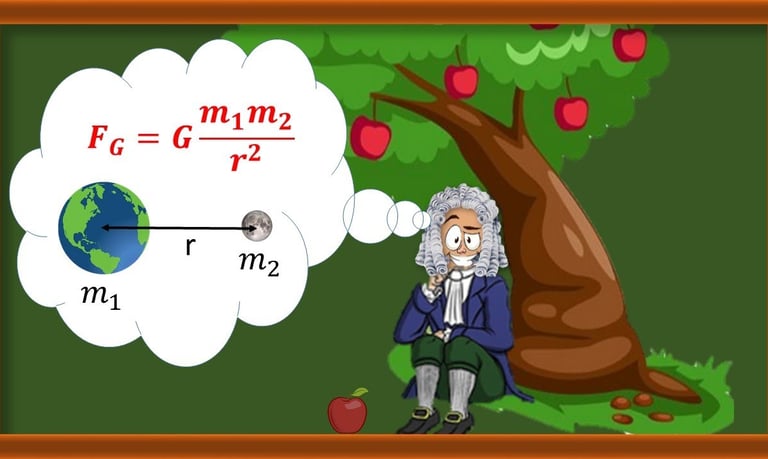
क्या हार में क्या जीत में ! किंचित नहीं भयभीत मैं
संधर्ष पथ पर जो मिले यह भी सही वह भी सही।
वरदान नहीं मानूंगा, हार नहीं मानूंगा |
Gravity
PHYSICS
6/3/20242 min read


Gravity
It is a fundamental force of nature that attracts objects with mass towards one another. It is one of the four fundamental interactions in physics, alongside electromagnetism, the weak nuclear force, and the strong nuclear force.
Basic Concepts
Newton's Law of Universal Gravitation:
Proposed by Sir Isaac Newton in 1687.
States that every point mass attracts every other point mass in the universe with a force that is proportional to the product of their masses and inversely proportional to the square of the distance between their centers.
Einstein's General Theory of Relativity:
Published by Albert Einstein in 1915.
Describes gravity not as a force, but as a curvature of spacetime caused by mass and energy.
Massive objects cause spacetime to curve, and this curvature affects the motion of objects, which move along the curves in spacetime.
More accurate than Newton's law, especially in strong gravitational fields and at high velocities.
Effects of Gravity
On Earth:
Gravity gives weight to physical objects and causes them to fall towards the ground when dropped.
The acceleration due to Earth's gravity is approximately 9.8 m/s^ 2
In Space:
Gravity governs the motion of planets, stars, and galaxies.
It keeps planets in orbit around stars, moons in orbit around planets, and stars in orbit around the centers of galaxies.
Tides:
Caused by the gravitational pull of the Moon and the Sun on Earth's oceans.
The differential gravitational force (tidal force) causes the water to bulge out on the side of Earth closest to the Moon and on the opposite side.
Applications and Implications
Space Exploration:
Understanding gravity is crucial for planning satellite orbits, space missions, and understanding the dynamics of celestial bodies.
Gravity assists, or slingshot maneuvers, use the gravitational pull of planets to accelerate spacecraft.
Astronomy and Cosmology:
Gravitational lensing, the bending of light by gravity, helps astronomers' study distant galaxies and dark matter.
The study of gravitational waves, ripples in spacetime caused by accelerating masses, provides insights into cosmic events like black hole mergers.
Earth Sciences:
Gravimetry, the measurement of Earth's gravitational field, helps in understanding geological structures and processes, such as the distribution of minerals and the behavior of tectonic plates.
Future Research
Unified Theory:
Scientists are working towards a theory of quantum gravity that would reconcile general relativity with quantum mechanics.
Dark Matter and Dark Energy:
Understanding gravity better may provide insights into dark matter and dark energy, which constitute most of the universe's mass-energy content.
Gravity is a fundamental aspect of our universe, influencing the motion of celestial bodies, the behavior of objects on Earth, and the fabric of spacetime itself. Advances in our understanding of gravity continue to shape our knowledge of the cosmos and our place within it.
